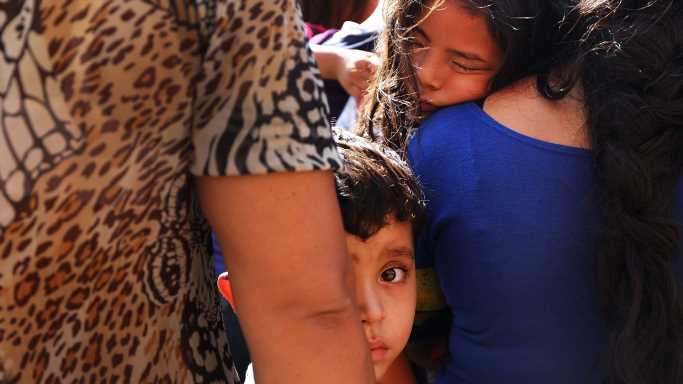
The Metro Area With the Worst Child Poverty Rate in Every State
June 24, 2022More than 40 million Americans live below the poverty line – an income threshold of about $35 per day, or $1,073 a month. Of those facing such extreme financial hardship, children are disproportionately affected.
The United States has one of the worst child poverty rates among wealthy, developed countries – and nearly 12.6 million children and youth under age 18 live in households with poverty level incomes. Not only are children at higher risk of poverty, they are also especially vulnerable to poverty’s harmful effects, both in the immediate and long-term.
Childhood poverty can negatively impact brain development and has been linked with a greater likelihood of chronic illness, shorter life expectancy, and poor emotional and behavioral health. Those who spend some or all of their childhood in poverty are also less likely to succeed in school or be financially secure later in life.
Nationwide, an estimated 17.5% of children under age 18 live below the poverty line. This share varies from place to place, however, and in most states, there is at least one major city where child poverty is more common than average. Using data from the U.S. Census Bureau, 24/7 Wall St. identified the metropolitan area in each state with the highest child poverty rate.
It is important to note that in six states – Alaska, Delaware, New Hampshire, Rhode Island, Vermont, and Wyoming – there is only one metro area with available data. As a result, the lone metro area ranks as having the worst child poverty by default only. Among the places on this list, the child poverty rate ranges from about 10% to nearly 40% and in all but a handful of cases, exceeds the overall statewide child poverty rate. Here is a look at the income a family needs to cover normal living expenses in every state.
Children raised in mother-only households are far more likely to live in poverty than those in two-adult households, and in most metro areas on this list, the share of households headed by single mothers exceeds the comparable statewide share.
Families in most metro areas on this list are also more likely to rely on government assistance to afford basic necessities than families in much of the state. The share of households with children receiving SNAP benefits, or food stamps, exceeds the statewide share in all but four metro areas on this list. Here is a look at the cities with the most people on food stamps.
Click here to see the metro area with the highest child poverty rate in every state
Click here to read our detailed methodology
Sponsored: Find a Qualified Financial Advisor
Finding a qualified financial advisor doesn’t have to be hard. SmartAsset’s free tool matches you with up to 3 fiduciary financial advisors in your area in 5 minutes. Each advisor has been vetted by SmartAsset and is held to a fiduciary standard to act in your best interests. If you’re ready to be matched with local advisors that can help you achieve your financial goals, get started now.
Source: Read Full Article


